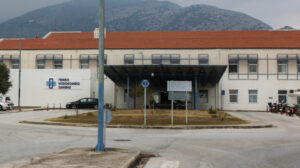Researchers have developed drug-loaded nanoparticles that selectively target the cells responsible for causing damaging inflammation following a spinal cord injury.
Given to mice soon after an injury, the novel therapy reduced inflammation and improved motor function, opening the door to new therapeutic possibilities for people with spinal injuries.
Sustaining a spinal cord injury (SCI) is devastating enough, but the subsequent inflammation and the damage it causes to the spinal cord can worsen the clinical outcome.
This secondary injury can develop over time and lead to paraplegia or quadriplegia that may not have been present at the time of the primary injury.
Kurt Cobain: Artificial intelligence reveals how he would be today if he was alive
Research has shown that in the first days after SCI, microglial cells are activated and proliferate, causing secondary injury via the production of pro-inflammatory cytokines.
These cells and their cytokines activate destructive astrocyte cells that further exacerbate inflammation.
Microglia and astrocytes are subtypes of glial cells, the non-neuronal cells of the brain and nervous system.
Continue here: New Atlas
Ask me anything
Explore related questions





